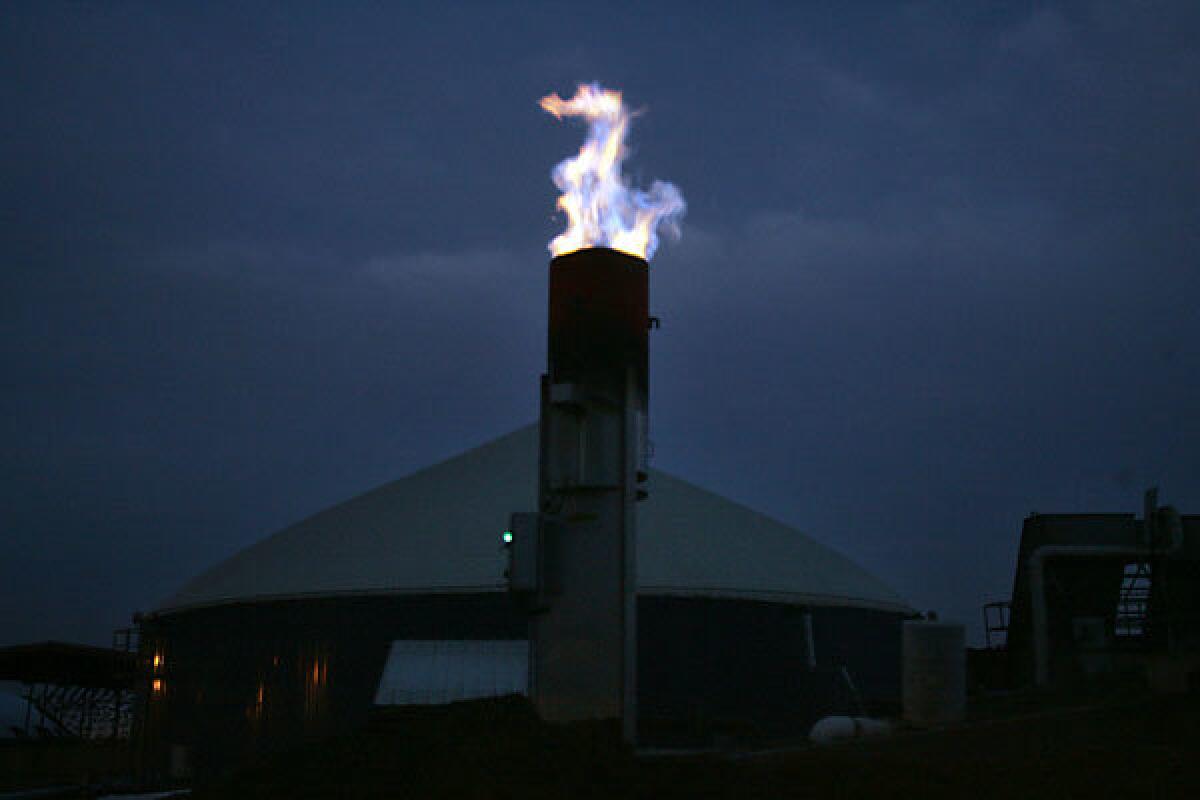Humanity’s methane problem could be much bigger than scientists thought

Fossil-fuel production may be responsible for much more atmospheric methane than scientists previously thought, according to new research published today in the journal Nature. The results, if they hold, suggest that methane needs to be managed even more tightly than was accounted for in multilateral initiatives such as the 2015 Paris Agreement — not to mention many policies on the national and local level.
Scientists aren’t challenging the top-line amount of fossil methane that enters the atmosphere every year — that number stays at about 194 million metric tons, says Benjamin Hmiel, a postdoctoral fellow in Earth science at the University of Rochester and the study’s lead author. Rather, they’re challenging how much of the total comes from natural versus industrial sources, an important distinction for policymakers.
Conventional wisdom has held until now that fossil sources emit roughly 50 million tons of methane. The new paper’s estimate is dramatically smaller: Just 5 million tons, at most, come from natural sources, or “seeps,” the study says. “If it’s not coming from seeps, then it’s coming from fossil-fuel operations,” says Rob Jackson, a Stanford professor of Earth system science who wasn’t involved in the study. “There’s really no other explanation for it. It’s kind of a zero-sum game.”
The Nature study takes advantage of a rare, radioactive form of the carbon atom that decays over several thousand years. Carbon-14 is present in trace amounts in the biosphere, embedded in naturally occurring molecules such as methane and carbon dioxide, but fossil fuels have no carbon-14 in them. Hmiel and his colleagues visited Greenland three times over two years to drill samples out of ice sheets dating back 300 years, then analyzed the gases trapped in them looking for carbon-14. This allowed scientists to establish a pre-industrial level for natural methane emissions.
Methane is a powerful heat-trapping gas — about 25 times more powerful than carbon dioxide over a period of 100 years — but because it’s not as abundant as carbon dioxide it has a lower climate effect overall. The largest component of natural gas, methane makes up about 17% of global greenhouse gas emissions. Lately, investor and activist pressure on oil and gas companies has led to ambitious climate-related pronouncements. BP PLC, for instance, pledged just last week to stop emissions from its own operations and production by 2050.
The new work widens a debate that stems from two opposing methods researchers use to measure methane: ice-core research and local monitoring of methane sources. Reconciling these two approaches will take some time, says Stefan Schwietzke, environmental scientist at the Environmental Defense Fund, which has conducted independent methane monitoring in the U.S. and is now expanding that work overseas. “We’re expecting that a lot more data will come out over the next few years,” he says. “That will also get at the question, how big are the oil and gas industry methane emissions internationally?”
The Nature paper builds on earlier work suggesting that natural methane emissions may be dramatically lower than previously indicated, and has triggered self-examination among some of the same scientists who’d produced the earlier, lower estimates. The new evidence comes as deadlines loom for next year’s United Nations Intergovernmental Panel on Climate Change report, the group’s sixth major assessment since 1990. The Global Carbon Project, an international research collaboration that Jackson chairs, is finishing up its own review of the Earth’s methane budget, expected this spring.
Jackson says that geologists and climate modelers will have to weigh in on the paper before it passes muster and the new numbers really become a headache for the policy community. “Scientists will check this quickly,” he adds. “It’s an important result.”
Hmiel is ready for them.
“I’m sure I’m going to get comments from the geologic community, arguing against my results, and I look forward to that,” he says. “That’s how science advances.”




